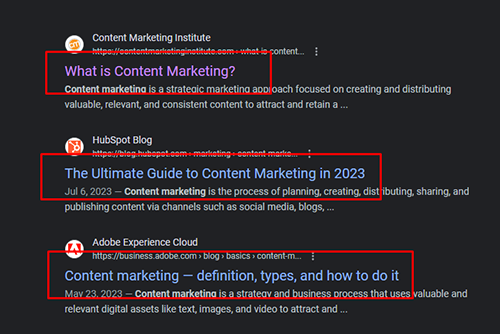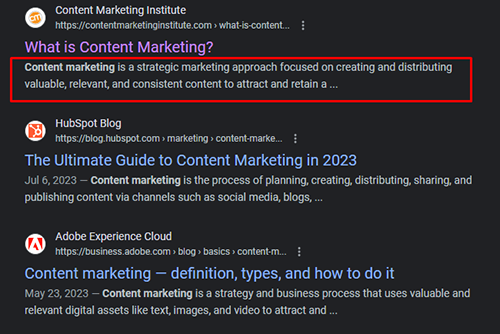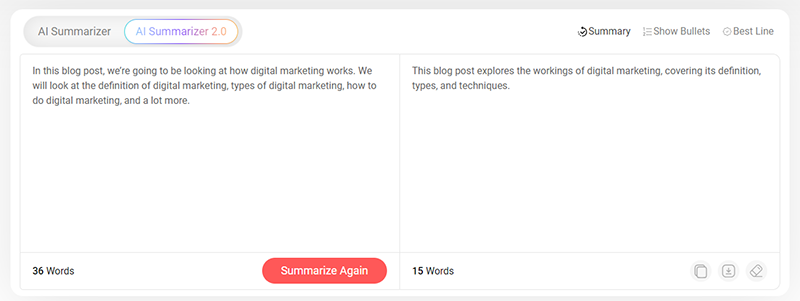Optimizing your website for SEO is one of the most effective ways to boost digital visibility. When people are able to find your site easily on the search engine, it means that your brand can get the exposure it needs to grow.
One of the main factors of SEO is written content. The content that is written on a website and the content that is used to promote it has to be high-quality. There are different qualities that SEO content has to possess.
In this post, we're going to be looking at some ways in which you can master the art of SEO content writing and ensure that your efforts pay off.
1.Always Stay on Top of Search Engine Updates and Guidelines
When we say �search engines,� it generally refers to all of the ones that are used nowadays, including Bing, Baidu, Yandex, etc. However, around 82% of the search engine market is dominated by Google, which is why we will keep our discussion somewhat specific to it.

Google releases updates regularly that change the way sites are ranked in the SERPs. If you want to master the art of SEO writing, you have to ensure that you always keep yourself educated about the latest updates. This will help you craft content that is in line with the specified guidelines.
To give you an example of what this means, consider the following:
-
In 2011, Google released the Panda update. The purpose of this update was to penalize plagiarized and low-quality content.
-
In December of 2022, the �helpful content� update targeted thin content and spammy backlinks.
-
The Penguin update in 2012 was also released to combat bad linking practices
Now, all of these updates, as well as the other major ones released by Google, had a major impact on how websites ranked in the results and how websites created their content.
In 2023 and 2024, such updates kept on being released. If you want to write good SEO content, you have to ensure that you stay on top of them and that you keep learning about them so that you can change and alter your strategies accordingly.
2.Focus On Creating Helpful, Valuable, Authoritative, And Reliable Content
Search engines, and Google in particular, look to rank helpful and valuable content in the SERPs. The main goal of these search engines is to provide helpful information to their users.
If you want to make your website rank higher and perform better in the SERPs, you should make the content fall in this criterion, i.e., being valuable and helpful.

If we talk about Google in particular, then you may be aware of the EEAT guidelines that it provides regarding the process of content creation. The EEAT stands for:
-
Experience
-
Expertise
-
Authoritativeness
-
Trustworthiness
The key takeaways that you can understand regarding all of this creating useful content are mentioned hereunder:
-
Before you embark on writing the content, make sure that you do extensive research and learn about the topic that you are writing about. This will help proffer reliable advice and information to the readers.
-
Make sure to garner reliable facts and figures to add to the content to make it look trustworthy.
-
Make sure to include your experiences and your personal advice in the content so the audience can relate to it. Also, this element in the content, i.e., the �experience� bit, helps to convey your expertise in the matter.
3.Utilize Keywords in The Content Properly
An important aspect of SEO writing is properly using keywords in the content. The exact guidelines for using keywords can change every now and then, which is why a safe approach is to use them moderately and naturally. That way, you won't have to worry about making a blunder or a mistake that could later get penalized in a future update.

Here are some tips and pointers that we give in this regard.
Find appropriate keywords for your content: One of the most important things to do vis-à-vis keyword adjustment in the content is to look for good ones before you get started. You have to find keywords that have the right:
-
search intent
-
volume
-
ranking difficulty
Create a list of keywords that you want to adjust in the content: After that, you have to create a list of keywords that you want to add to your content. Creating a list beforehand helps you to make sure that none of the important ones are left out. Plus, creating a plan like this helps you to structure and shape your content in a way that the keywords are featured naturally. In this list, you should include the main focus KW and some secondary ones.
Stick to the 1% density rule: Normally, a lot of online sources advise using the main focus keyword in a 1% or 2% density in the content. However, in our personal experience, we have found that 2% can be a bit too much for readability. It is better to keep it at 1%.
Ensure that the keywords you add are naturally placed: This is also a very important thing to keep in mind. A lot of beginner writers can end up adjusting the keywords in the content haphazardly and without caring for how normal and natural they look. You should mention the keyword after a brief description or explanation that sets the scene for it.
4.Pay Special Attention to the Metadata of Your SEO Content
The metadata of your SEO content contains different elements, such as the meta title and the meta description.
Both the meta title and the meta description have to be written in a specific way so that they are descriptive and appeal to both the readers and the search engines.
Meta Title
The meta title can understood to be the title of the content that shows up on the SERPs. For example, if you look up a blog post about �Content Marketing,� then the titles of the blogs that show up are the meta title. Here, have a look:

There are some important things to remember about the meta title.
-
The title should be descriptive. It should efficiently describe the contents of the webpage.
-
The title should contain the focus keyword. This is a good practice that helps to make the webpage more SEO-friendly
-
The title should be around 55 to 60 characters long. If it is longer than that, then the title would truncate into the ��� without being completely shown in the SERPs.
Meta Description
Moving on, the meta description is the brief description that describes the content of the webpage to the search engine in some more detail. While the title is small and brief, the description is slightly larger. Here is an example of a meta description:

As is the case with the meta title, the meta description has to be written in a specific way. Some important points to remember about writing a meta description are as follows:
-
The meta description should also contain the main focus keyword.
-
It should be up to 155 characters long. Any more than that would make it truncate.
How do you ensure conciseness in SEO meta titles and descriptions using online tools?
A lot of people can struggle with adjusting the length of the meta title and description. They can make it too long because of all the details that have to be added.
A good way to adjust the length of these types of short content is to use an online summarizing tool. The process is simple enough. All you need to do is write the title or the description as you want, and then you run it through a summarizing tool. The tool will shrink it in size and make it suitable for use.
Consider this example:
Meta description: In this blog post, we're going to be looking at how digital marketing works. We will look at the definition of digital marketing, types of digital marketing, how to do digital marketing, and a lot more.
This description is too long, and it is not suitable for use. However, we can shrink it with a summarizing tool. We're going to use a specific one called �AI Summarizer.� Here is what the output looks like:

As you can see, the summarized version of the definition is much smaller and more appropriate for SEO purposes.
This blog post explores the workings of digital marketing, covering its definition, types, and techniques.
Conclusion
In this post, we have looked at some important steps of SEO content writing that you should take in order to get the most out of your efforts. While there are other tips and other aspects to the process as well, we have successfully talked about the major ones.
We hope you enjoyed reading and that you will utilize these techniques yourself when the need arises.
Frequently Asked Questions
1.What is SEO in content writing?
SEO in content writing refers to the process of making the content capable of ranking on the top pages of the SERPs. There are different SEO steps that have to be taken in this type of writing, such as adding keywords, structuring headings, and so on.
2. How do I find SEO keywords?
You can find SEO keywords by using tools such as Ahrefs. These are known as keyword-exploring tools.
3.Does AI content work for SEO?
AI content can get de-ranked by search engines because it can be generic and thin. AI content tends not to work for SEO.









